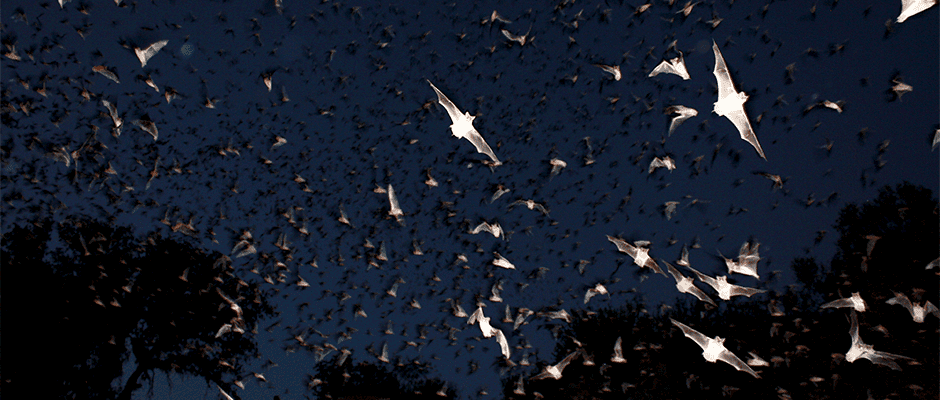Share this article
Climate and landscape changes shifting Texas bats’ migration
Climate and land use changes are altering bat migration in Texas, researchers found. Studying the world’s largest migrant bat colony, they discovered that the bats are returning sooner after winter or not migrating in the first place as prey becomes increasingly available in Texas’ warming conditions and on its proliferating farms.
“Spring migration’s been advancing around half a day per year,” said Philip Stepanian, lead author on the paper published in Global Change Biology.
As visiting scientists at Rothamsted Research in the United Kingdom, Stepanian and co-author Charlotte Wainwright studied Brazilian free-tailed bats (Tadarida brasiliensis) at Bracken Cave near San Antonio, Texas, by tapping into long-term weather radar data. The data allowed the researchers to monitor the bats without disrupting their activities. They examined 22 years’ worth of public online radar archives to count clusters of bats — which the radar picks up like clouds of raindrops — in the air above the cave every night in the last 22 years.
“That standardized measurement allowed us to see when the bats started showing up in spring and how many were around during winter and gave us a repeatable benchmark,” said Stepanian. “We used weather radar measurements like a time machine to see what was going on in the past to better understand what’s going on now.”
The numbers revealed that come springtime, millions of bats are flocking to Bracken Cave from wintering hibernacula in Mexico in mid-March, two weeks earlier than they used to. Up to 300,000 individuals stay put over winter rather than journey south, a trip the entire population made in previous decades.
The biologists suspect that as Texas has heated up over the past three decades and agriculture has expanded over the landscape, insects the bats eat are emerging faster in spring, occurring in higher abundance throughout winter and supporting them at those times.
“There are enough resources to feed the bats, whereas there may not have been in the past,” Stepanian said. “The most likely explanation is a combination of agriculture — there being more food sources for these insects — and climate — it’s warmer, and we’re not killing off as many insects over winter.”
Bats eradicate more than half their weight in insects such as noctuid moths, corn earworm (Helicoverpa zea) and fall armyworm (Spodoptera frugiperda), pests whose greater persistence could have consequences for local crop yields, he said.
Across the United States, biologists have estimated, bats provide almost $23 billion in pest control services to farmers. Those services could be jeopardized here, Stepanian said.
“Studies have shown that bats keep pace with insects during migration, but we also know that insects adapt more readily to seasonal shifts,” Stepanian said. “If the pests start beating the bats to Texas, farmers could feel the impact.”
Wainwright plans to investigate climate data to identify potential meteorological drivers behind overwintering in Bracken Cave.
“So much has changed for these bats in such a short period,” Stepanian said. “They’re providing an important service we depend on, so it’s our responsibility to understand how these populations are doing and what the threats are to them.”
Header Image: Brazilian free-tailed bats exit Bracken Cave in southern Texas. ©Ann Froschauer








